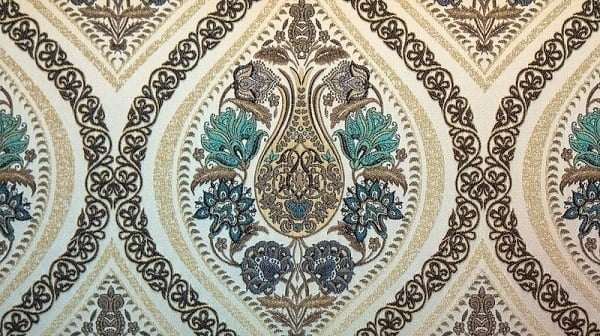Selecting the perfect fabric for an ottoman can be a daunting task. With countless options available, it’s crucial to choose a fabric that not only suits your aesthetic preferences but also offers durability and easy maintenance.
This comprehensive guide will help you navigate through various ottoman fabric options, upholstery fabrics for ottomans, and the best textiles for ottoman covering. We will discuss the key factors to consider when choosing suitable materials for ottomans, including textures for ottoman upholstery, ottoman fabric patterns, durable fabric choices for ottomans, and easy maintenance fabrics for ottoman covers.
Additionally, we will explore stylish fabric designs for ottoman decor, weave options for ottoman upholstery, fiber types for ottoman fabrics, interior design fabrics for ottomans, and cushion fabrics for ottomans. By the end of this guide, you’ll be well-equipped to make an informed decision about the ideal fabric for your ottoman.
1. Types of Ottoman Fabric Options
A. Natural Fabrics
Natural fabrics are sourced from materials found in nature, such as plant fibers and animal products. Some common natural fabrics used for ottoman upholstery include:
1. Cotton
Cotton is a popular choice for ottoman fabric due to its durability, resistance to wear, fading, and pilling. However, it is less resistant to soil and wrinkling. A cotton blend can be a more sturdy and family-friendly option, especially when treated with a stain-resistant finish like Scotchgard Fabric and Upholstery Protector.

2. Linen
Linen, made from flax plant fibers, is a strong and durable option for ottoman upholstery like benches,footstools. It is resistant to dirt and stains, making it suitable for households with children or pets. However, linen can wrinkle when washed, so opt for high-quality linen to ensure resistance to pilling, abrasion, and moths.
3. Leather
Leather offers a luxurious and sophisticated appeal, making it suitable for ottomans placed in formal living spaces. Leather is durable, easy to clean, and can withstand daily wear and tear. It also comes in various color options, allowing you to choose a shade that complements your existing decor.
Related : Say Goodbye to Dirt and Stains: The Ultimate Guide to Cleaning Faux Leather Ottoman
4. Wool
Wool and wool blends provide durability, resistance to pilling, fading, wrinkling, and soil. Wool is often blended with synthetic fibers to improve its cleaning ease and reduce the possibility of felting. Wool-blend ottoman covers can be spot-cleaned when necessary.

5. Velvet
Velvet is a luxurious fabric that adds an elegant touch to any ottoman. It’s soft to the touch and can be found in various colors and textures. Velvet is also known for its durability, but it can be prone to crushing and pilling, so it may not be the best choice for households with children or pets.
To ensure a longer life span, opt for velvet blends that are treated with a stain-resistant finish. Additionally, look for velvet fabrics with higher pile weights and double rub counts to ensure maximum durability.
B. Synthetic Fabrics
Synthetic fabrics are man-made materials designed using chemical processes. They are typically more durable and less expensive than natural upholstery fabrics. Some popular synthetic fabrics for ottomans include:
1. Polyester
Polyester is a durable and affordable synthetic fabric that offers high resistance to stains and scratches. It is suitable for households with children and pets, as it can withstand daily wear and tear. Polyester can be blended with natural fibers to improve its softness and comfort.
2. Microfiber
Microfiber, made from polyester, is a popular upholstery fabric for ottomans due to its velvet-like texture and durability. It resists water, stains, and fading, making it ideal for high-use living areas.

3. Faux Leather
Faux leather is an affordable and easy-care alternative to genuine leather. It offers a similar look and feel and is suitable for busy living and dining rooms.
4. Vinyl
Vinyl is a less expensive alternative to leather, offering a similar look and feel. It is durable, easy to clean, and suitable for high-traffic areas.
5. Faux Linen
Faux linen is a synthetic fabric designed to mimic the appearance and texture of natural linen. It’s typically woven from synthetic fibers like polyester, creating a visually appealing fabric that’s both durable and versatile. Faux linen offers a more affordable and accessible alternative to traditional linen, making it an excellent choice for ottomans and other furnishings.
2. Factors to Consider When Choosing Upholstery Fabrics for Ottomans
A. Durability
Select a fabric that can withstand the daily wear and tear of your ottoman. Consider factors like thread count (the number of threads per square inch) and the fabric’s resistance to pilling, fading, and wrinkling.
B. Maintenance
Choose a fabric that is easy to clean and maintain. Some fabrics, like microfiber and polyester, are more resistant to stains and easier to clean than others, like velvet and linen.
Related: How To Clean An Ottoman: Your Comprehensive Guide
C. Aesthetic Appeal
The fabric should complement the existing decor of your room. Consider the fabric’s color, pattern, texture, and style when making your choice.
D. Comfort
Select a fabric that offers a comfortable seating experience. Consider factors like softness, breathability, and resistance to static charges.
3. Best Textiles for Ottoman Covering: Textures and Patterns
A. Textures
The texture of the fabric can greatly impact the look and feel of your ottoman. Some popular textures for ottoman upholstery include:
- Velvet: Offers a plush and luxurious feel
- Linen: Provides a natural and breathable texture
- Leather: Has a sophisticated and smooth surface
- Microfiber: Features a soft and velvety texture

B. Patterns
Patterns can add visual interest and personality to your ottoman. Some popular ottoman fabric patterns include:
- Geometric: Brings a modern and bold appeal
- Floral: Adds a touch of nature and elegance
- Abstract: Creates a unique and artistic vibe
- Stripes: Offers a classic and timeless look
4. Durable Fabric Choices for Ottomans
When selecting a fabric for your ottoman, prioritize durability to ensure it can withstand daily use. Some durable fabric choices for ottomans include:
- Leather and Faux Leather: These materials offer excellent durability and can withstand daily wear and tear.
- Polyester: A synthetic fabric that is both durable and affordable, making it suitable for households with children and pets.
- Microfiber: A polyester-based fabric with a velvet-like texture that is both durable and easy to maintain.
In case your ottoman becomes worn out or damaged, another option is to consider reupholstering it yourself if you enjoy DIY projects. When choosing the fabric, it is essential to prioritize durability.
5. Easy Maintenance Fabrics for Ottoman Covers
Selecting a fabric that is easy to clean and maintain is essential for preserving the appearance and longevity of your ottoman. Some easy maintenance fabrics for ottoman covers include:
- Microfiber: Resistant to water, stains, and fading, making it easy to maintain.
- Polyester: Highly resistant to stains and scratches, ideal for households with children and pets.
- Vinyl: Durable and easy to clean, offering a less expensive alternative to leather.
6. Stylish Fabric Designs for Ottoman Decor
Choosing a stylish fabric design can elevate your ottoman and enhance the overall aesthetic of your space. Some stylish fabric designs for ottoman decor include:
- Bold Patterns: Geometric, abstract, or floral patterns can create a striking focal point in your room.
- Luxurious Textures: Velvet or leather can add a touch of elegance and sophistication to your space.
- Muted Tones: Neutral or muted colors can create a calming and cohesive look in your room.
7. Weave Options for Ottoman Upholstery
The weave of the fabric can affect its durability, appearance, and comfort. Some popular weave options for ottoman upholstery include:
- Twill: A diagonal weave that offers a smooth and durable surface.
- Jacquard: A complex weave that creates intricate patterns and textures.
- Chenille: A soft and plush weave that provides a cozy and comfortable feel.
8. Fiber Types for Ottoman Fabrics
The type of fiber used in the fabric can impact its durability, comfort, and appearance. Some common fiber types for ottoman fabrics include:
- Cotton: A natural fiber that offers good durability and resistance to wear, fading, and pilling.
- Linen: A strong and durable natural fiber that is resistant to dirt and stains.
- Polyester: A synthetic fiber that is durable, affordable, and resistant to stains and scratches.
9. Decorating with Fabric for Ottomans
When decorating your space, consider the following tips for incorporating fabric into your ottoman design:
- Coordinate with existing decor: Choose a fabric that complements the colors, patterns, and textures in your room.
- Mix and match patterns: Combine different patterns and textures to create visual interest and depth in your space.
- Play with scale: Use larger patterns on larger ottomans and smaller patterns on smaller ottomans to maintain balance and proportion.
10. Interior Design Fabrics for Ottomans
When selecting a fabric for your ottoman, consider the overall interior design theme of your space. Some popular interior design fabrics for ottomans include:
- Mid-Century Modern: Opt for bold patterns and geometric designs in vibrant colors.
- Traditional: Choose classic patterns, such as damask or paisley, in rich, warm tones.
- Minimalist: Select simple and understated fabrics in neutral colors and subtle patterns.
Conclusion
In conclusion, selecting the perfect fabric for your ottoman requires a careful consideration of various factors, including durability, maintenance, aesthetic appeal, and comfort. By exploring different ottoman fabric options, textures, patterns, weaves, and fiber types, you can find the ideal fabric that suits your needs and enhances your home decor. Don’t forget to also consider decorating with fabric for ottomans and incorporating interior design fabrics for a cohesive and stylish look.
For more information on ottoman fabrics and interior design tips, check out these authoritative sources:







